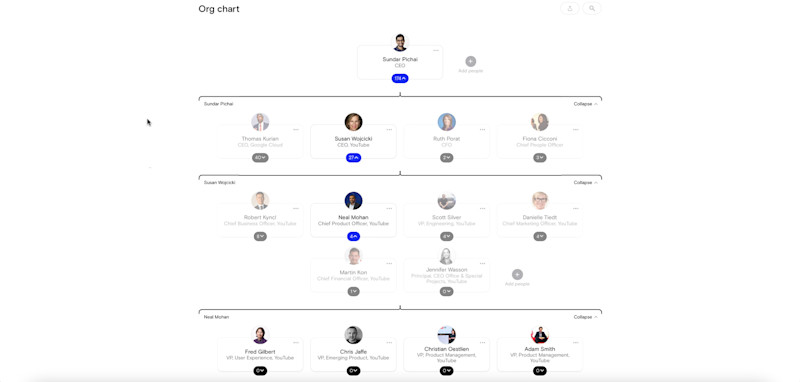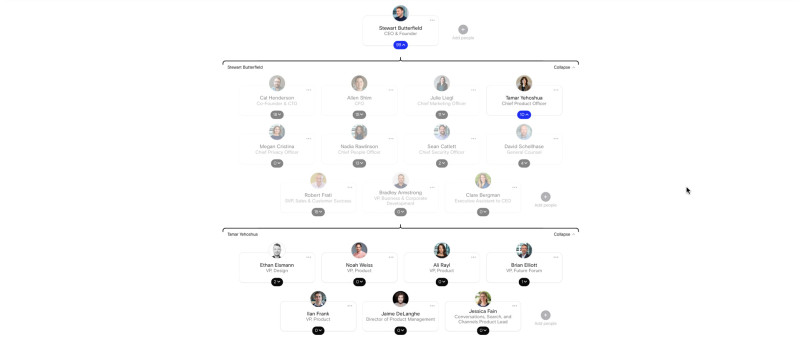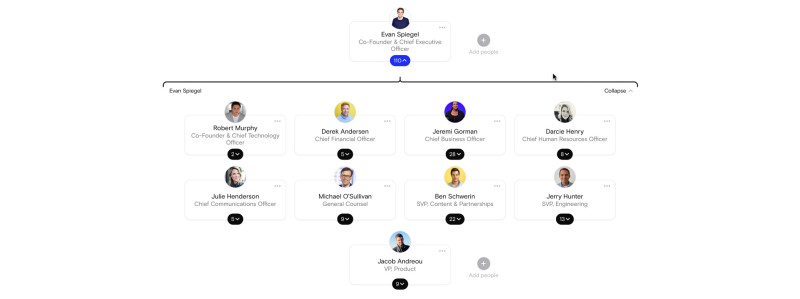Table of contents
What exactly does a VP of Product do? What should they be doing? LetŌĆÖs find out.
A VP of Product is an executive position that manages an organization's product portfolio. They focus on the company's long-term vision to set goals and targets for product managers and directors.
The VP of Product also spends a lot of time evaluating the market, competitors, their customers to ensure the organization and its products remain relevant and competitive.
While they don't make individual product decisions, the VP of Product works with product managers and directors to develop the product roadmap. They use their knowledge and experience to ask tough questions and coach product managers and directors.
VP of Product vs. Product Manager vs. Director of Product
A product manager manages an individual product's vision, roadmap, and strategy. They often lead a cross-functional team of UX designers, engineers, sales reps, markers, and customer support staff who develop, sell, and market the product.
A Director of Product oversees a group or suite of products within the organization's portfolio to define and align the high-level vision and strategy. Product directors are responsible for building the product management team, including nurturing internal staff or recruiting new talent.
The VP of Product is responsible for the product management group (including product managers and directors) and defining the high-level vision for the organization's product portfolio.
Where a VP of Product sits in an organizational chart
Here are examples from some of the biggest tech companies to see where a VP of product sits in an organizational chart. The position will vary depending on the size of the company and the size of its portfolio.
For example, the VP of Product will report to a Chief Product Officer (CPO) in large corporations. While in smaller companies, they play a CPO role and may even work closely with the board of directors.
1) YouTube (Google)

There are three Product VPs at YouTube; two VP of Product Management and one VP of Emerging Product. They report to Neal Mohan, YouTube's Chief Product Officer, who reports to YouTube's CEO, Susan Wojcicki. And finally, at the top is Google SEO, Sundar Pichai.
Read more about GoogleŌĆÖs unique org chart, and leadership team.
The VP of Product's Responsibilities
As you can see from three different org charts, a VP of Product's responsibilities will vary depending on the company's structure and the size of its portfolio.
Vision & Product Roadmap
While product managers and directors are responsible for developing and executing their product roadmaps, the VP of Product will define the long-term vision, goals, and parameters.
The VP of Product is most interested in each product's life cycle, knowing which stage it's in and, more importantly, when it's in decline. They must make the hard decision when to phase out specific products. Too early or too late could be costly for the organization.
Budgeting & Forecasting
The VP of Product must allocate budgets for each product manager and director to manage. To do this successfully, they must assess forecasts and financial models to determine how to distribute resources to deliver the highest return on investment.
Execution
The VP of Product isn't responsible for executing strategies, but they are responsible for hiring the right people. They must appoint the best candidates to manage and implement product strategies while providing coaching and mentorship along the way.
Voice of the Customer
The VP of Product is the voice of the customer when communicating with C-level executives and the board of directors. They must ensure that high-level decisions are made in the best interests of the business and its customers.
VP of Product Skills and Strengths
Here are some core skills and strengths to become a great VP of Product.
- Leadership & management: The VP of Product is a high-level leadership role. They lead talented, driven managers and directors and must be assertive leaders and mentors to set an example.
- Communication & Public Speaking: The VP of Product spends most of their time communicating with peopleŌĆöfrom the CEO down to low-level employees, customers, suppliers, and even customers. They may even have public speaking engagements and interviews with the media.
- Influential: To be good leaders and communicators, Product VPs must be able to influence people and decisionsŌĆöat the executive level and throughout their department. Influence is a tough skill to master because it requires a good balance of assertion and compromise.
- Business acumen: Product VPs must have extensive business knowledge, education, and experience with an entrepreneurial mindset. They're responsible for many business functions, including strategy, networking, forecasting, budgeting, and communication, to name a few.
- Product design & innovation: The VP of Product is competent and understands the end-to-end process, including concept, design, and development. They know how to manage these processes individually and identify areas for innovation.
- Technical interest & skills: Most Product VPs study a technical degree and therefore have a keen interest in tech and programming. They typically possess a full-stack skillset with knowledge and experience of multiple programming languages.
Career Path to VP of Product
To start, most Product VPs hold a bachelor's or master's degree in a technical field. Most employers also require at least ten years of career experience, with three to five years in a leadership position.
In some cases, the position will require industry-specific knowledge and experienceŌĆöfor example, five years working in Fintech or SaaS.
A typical VP of Product career path might look something like this:
- Product designer/UX designer/developer
- Team lead
- Product manager
- Product Director/Head of Product
- VP of Product
Beyond the VP of Product, there are usually only two positions, a Chief Product Officer (CPO) and Chief Executive Officer (CEO).


The ┬▄└“┬ę┬ū helps
you hire great
candidates
Free to use ŌĆō try today

